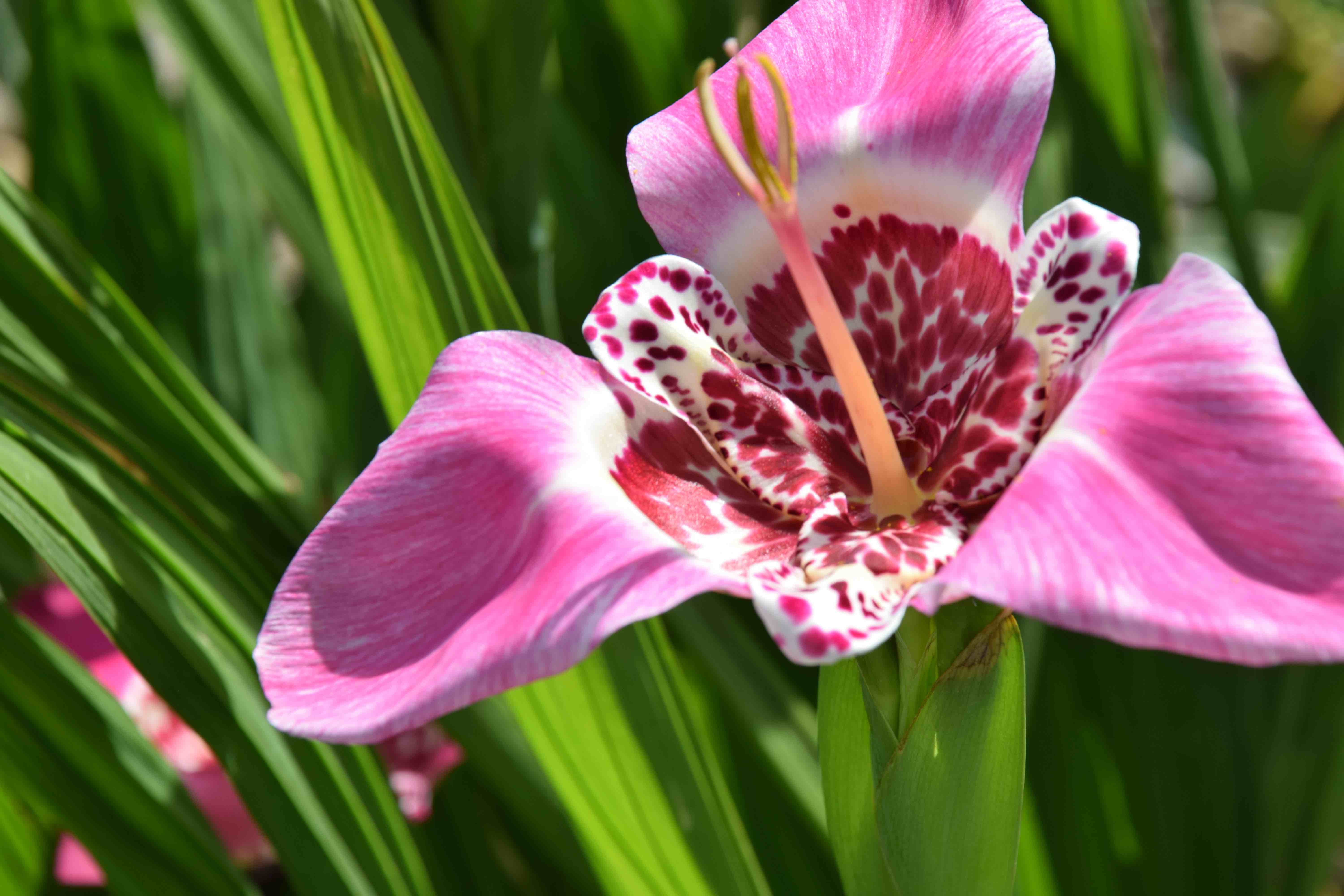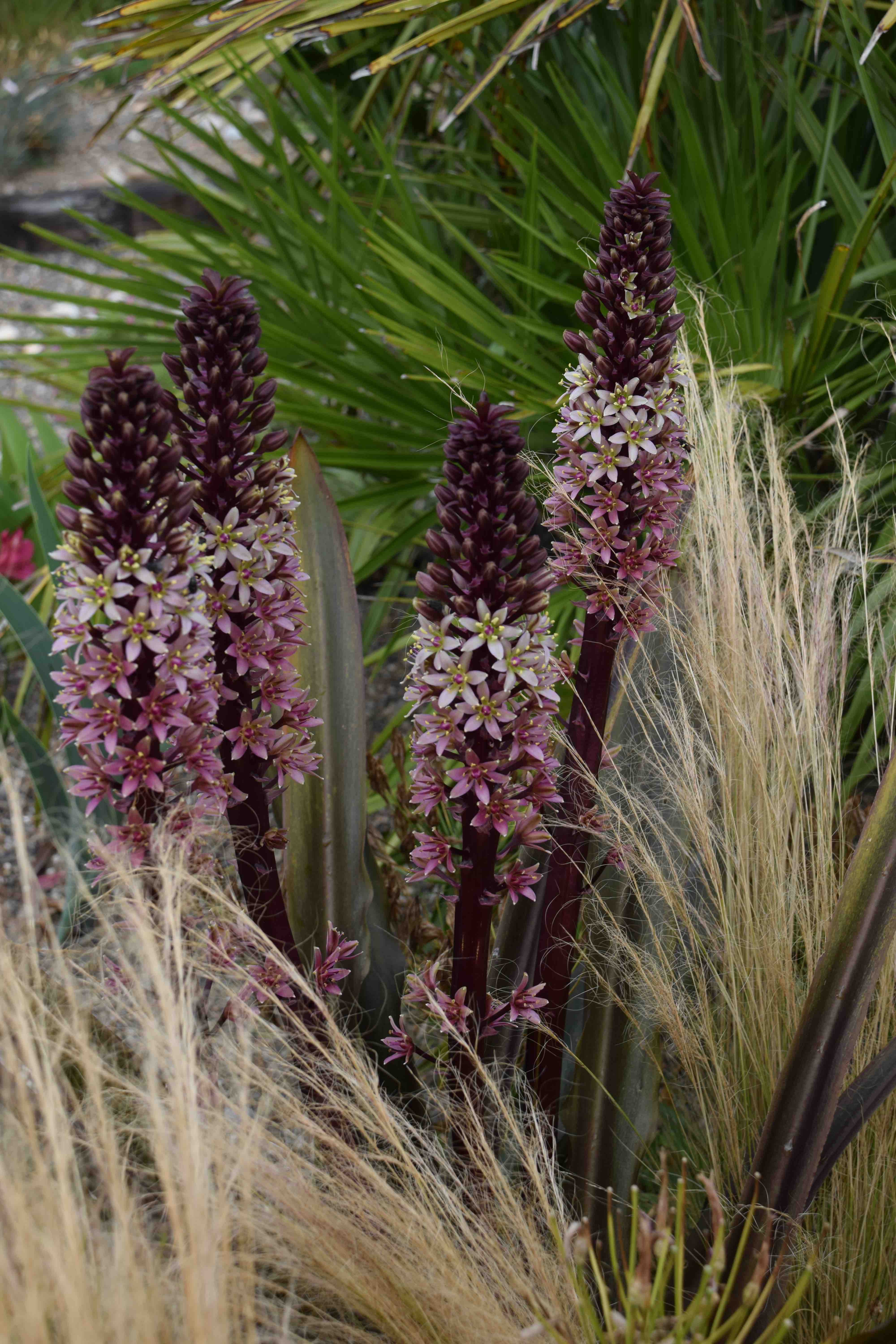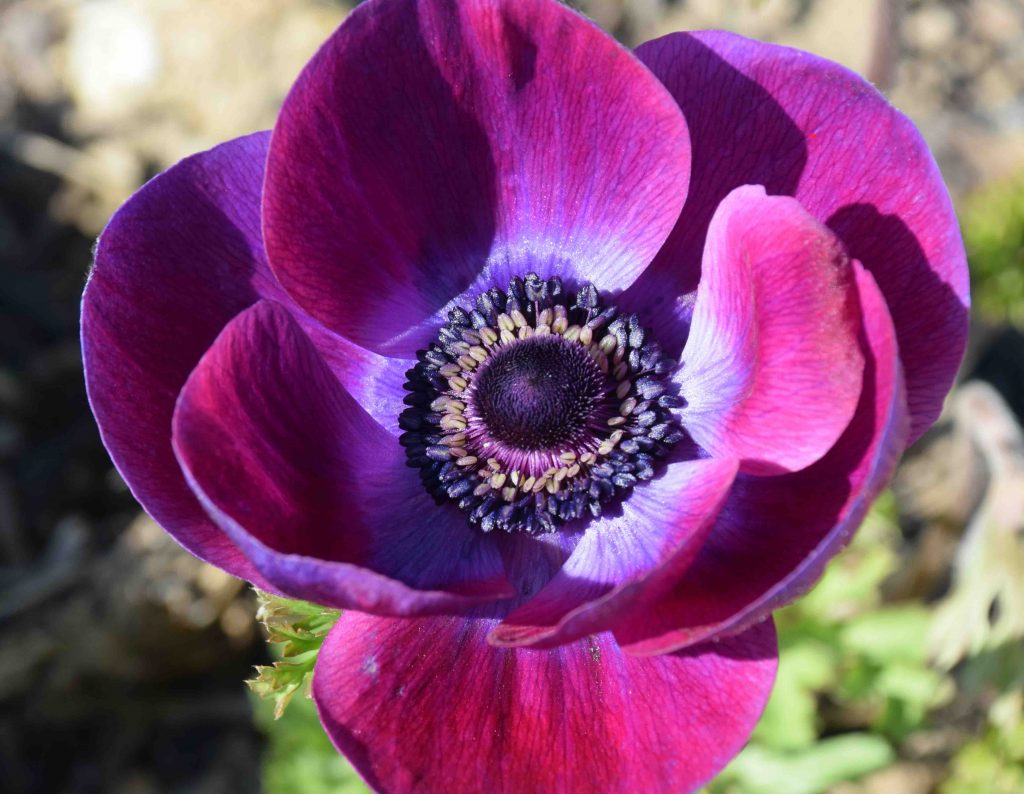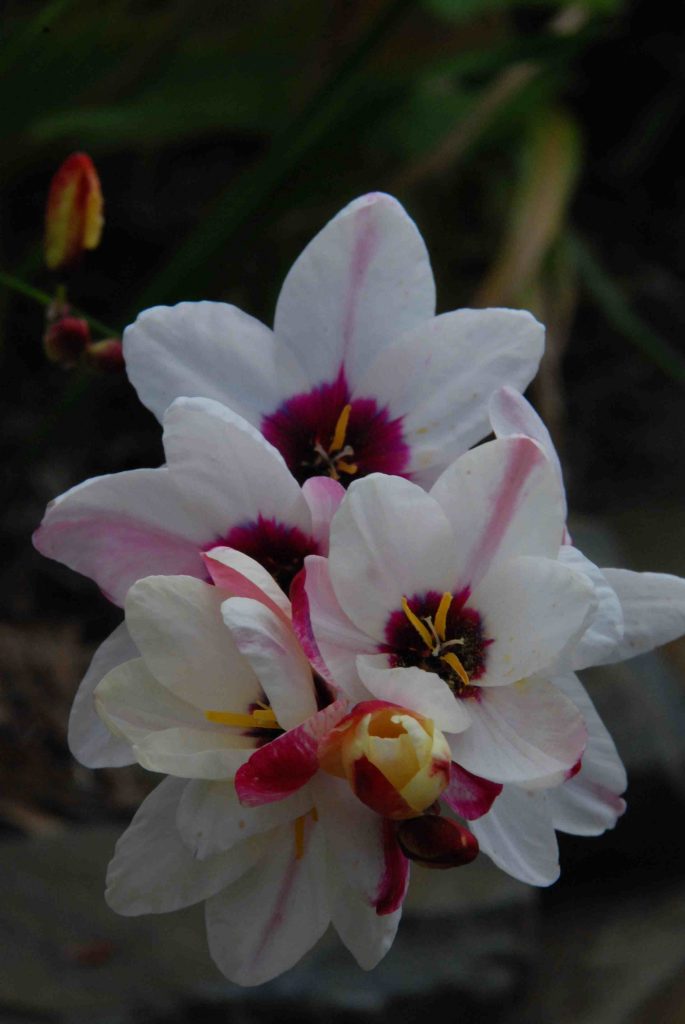
Over the past few weeks I have been talking about some of the main summer bulbs and how to grow them. This week I want to mention a few of the lesser-grown summer bulbs that you may not have tried before. Some are not hardy and could be considered ‘summer treats’ but they are all worth a try. All will give your summer garden a lift.
One that I try to grow every year is tigridia, the tiger flower – though it should really be called the leopard or cheetah flower since the blooms are spotted, not striped. This Mexican beauty has huge, spectacular flowers in a range of sparkling colours and is grown from small, pointy corms. Plant these, pointy-end up, 8cm deep, outside in late March (so they do not appear above ground before late April) or you can start them in pots in a greenhouse. This will bring earlier flowers, otherwise they usually bloom in August/September.
The plants produce stems about 60cm high with several, pleated leaves and they usually require support. They need a sunny spot and are best in light soils. But they are generally easy to grow. There has to be a catch, of course, and there are two! Each flower only lasts a day, but they are produced in succession at the top of the stems so a clump of ten corms will have a few flowers open every day for more than a month. Secondly, the corms are not reliably hardy so need lifting and storing in winter. But they also often set seeds and if you want to grow a few hundred, the seedlings will flower in the second year. Tigridias are a bit of effort but nothing prepares you for the beauty of the flowers.

Eucomis are often called pineapple lilies, because of the tuft of leaves on top of the flowers stems but, of course, they are not pineapples nor lilies. The most common are E. bicolor and E. comosa, which is usually seen as purple-tinted forms such as my ‘Sparkling Burgundy’ (above). These South African bulbs produce a few, fleshy, long leaves and then a tower of starry flowers, usually in green and ivory shades.
They may be relatively expensive but they are long-lived and get better every year. I used to be worried about their hardiness and grew them in pots that I could keep in the greenhouse over winter. But experience has shown that, as long as they are planted deeply (at least 10cm) so the frost can’t reach the bulbs, they are tougher than I thought.
To prove this, the plants above, in flower last September, were originally planted in my garden ten years ago. When I moved, they were dug up and kept in a pot for two years till I could replant them in this garden. They then went into rather heavy, unprepared soil and then into their present raised bed and now they are thriving. They have had a tough life and the three bulbs would have increased more if they had been treated better, but they have survived and I am happy that they are in their forever home now.
Different varieties vary in colour and height but those pictured above are about 75cm (30in) high. I am sure you can tell I am very fond of them.

I always have rather mixed feelings about these De Caen-type anemones. They are pretty and they were one of my Grandmother’s favourite flowers. But I don’t think they are satisfying garden plants. Where they excel is for cut flowers. But let me explain.
These are Mediterranean plants and they are adapted to a Mediterranean climate. That means they start to grow in autumn, when the rains start, then they flower and die down before the summer heat and drought. So, in the garden, they bloom in spring and early summer and disappear underground in May. This can leave gaps in the border.
But they are cheap and easy to grow and you can plant them in autumn or now. If you plant them now they will bloom in May and June, later than normal. But they will then die down and disappear for summer. They will revert to their natural growing rhythm and start to grow in autumn. The first flowers will appear in early spring – the flower above was open this week. Because I prefer them for cutting I grow them in a clump in the veg garden where they appreciate the rich soil.

I will briefly mention ixias because they are fun to try. Commonly called corn lilies, these South African corms need a sunny, well-drained site. They are good in combination with nerines or in that dry, sunny bed by the house. They are winter-growing, meaning that normally they start to grow in autumn and they can be damaged by frost except in sheltered conditions. They will flower in late spring, usually at the same time as most alliums. But, planted now, they will flower in summer. They are rather slender and willowy and need support. A good way to achieve this is to plant them under lavender, to provide extra colour. Even if you only grow them for one year, they are cheap as chips to buy but put them somewhere sunny. The blooms only open in warm sun .
Next week: gladioli